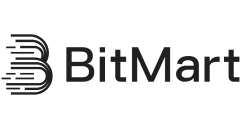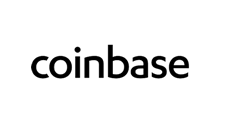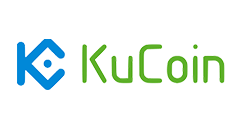Blast
$0.00071542
0.00071600
$37,080,891
Total Market Cap
100,000,000,000 BLAST
Circulating Supply
$3,231,452
24h Volume
$37,080,891
Total Market Cap
100,000,000,000 BLAST
Circulating Supply
$3,231,452
24h Volume
$37,080,891
Total Market Cap
100,000,000,000 BLAST
Circulating Supply
$3,231,452
24h Volume
$37,080,891
Total Market Cap
100,000,000,000 BLAST
Circulating Supply
$3,231,452
24h Volume
| # | Signal | Exchange | Type | Age |
|---|


| Logo | Exchange | Price | Pair | Spread | 24h Volume |
|---|---|---|---|---|---|
 |
BingX | $0.000716 | BLAST/USDT | $0.00 | $93,887 |
 |
BitMart | $0.00071 | BLAST/USDT | $0.00 | $112,321 |
 |
Bybit | $0.000715 | BLAST/USDT | $0.00 | $410,154 |
 |
Coinbase Advanced | $0.00072 | BLAST-USD | $0.00 | $53,250 |
 |
Crypto.com | $0.0007094 | BLAST/USD | $0.00 | $6,634 |
 |
EXMO | $0.00081 | BLAST/USDT | $0.00 | $2,507 |
 |
HTX | $0.000713 | BLAST/USDT | $0.00 | $1,098,362 |
 |
KuCoin | $0.000717 | BLAST/USDT | $0.00 | $20,387 |
 |
Poloniex | $0.0007 | USDT_BLAST | $0.00 | $0 |
Blast (BLAST) is an Ethereum Layer 2 (L2) scaling solution that has gained significant attention in the cryptocurrency ecosystem. Designed to enhance the capabilities of Ethereum, Blast offers unique features that set it apart from other L2 solutions. Users interested in trading BLAST can efficiently do so on various exchanges using the automated trading bot capabilities of Cryptohopper.
Blast (BLAST) is an Ethereum Layer 2 blockchain created by notable crypto developer Tieshun Roquerre, also known as Pacman, who was behind the Blur NFT marketplace. Launched in November 2023, Blast distinguishes itself as a native yield-bearing L2 solution that automatically generates returns for users who hold ETH or stablecoins on its network. The BLAST token serves as the platform's utility and governance token.
As an Ethereum L2 solution, Blast enhances scalability by processing transactions off the main Ethereum chain while maintaining the security guarantees of the Ethereum mainnet. This approach allows Blast to offer faster and cheaper transactions compared to the Ethereum base layer.
Blast (BLAST) operates through an optimistic rollup architecture that bundles multiple transactions together before submitting them to the Ethereum mainnet. This technological approach significantly reduces gas fees and increases throughput compared to direct Ethereum transactions.
Key components of how Blast works include:
Blast (BLAST) does not support traditional mining as it uses a Proof of Stake (PoS) consensus mechanism inherited from Ethereum's architecture. However, it offers several ways to earn passive income:
Unlike traditional mining cryptocurrencies, BLAST's value accrual mechanism is built around participation in ecosystem activities and providing liquidity rather than solving computational puzzles.
Blast (BLAST) serves multiple purposes within its ecosystem:
The BLAST token launched in February 2024 following a points-based system that rewarded early adopters. The distribution model for BLAST tokens included:
The distribution featured a vesting schedule to prevent immediate selling pressure and ensure long-term alignment between token holders and project success.
Blast (BLAST) has some additional noteworthy characteristics:
Investors and traders interested in BLAST can easily participate in this growing ecosystem through various exchanges using Cryptohopper's automated trading bot, which allows for efficient trading strategies without requiring constant manual monitoring.
Below are the most popular denominations to convert to USD and back into BLAST
| BLAST | US Dollar |
|---|---|
| 0.01BLAST | 0.00USD |
| 0.1BLAST | 0.00USD |
| 1BLAST | 0.00USD |
| 2BLAST | 0.00USD |
| 3BLAST | 0.00USD |
| 5BLAST | 0.00USD |
| 10BLAST | 0.01USD |
| 25BLAST | 0.02USD |
| 50BLAST | 0.04USD |
| 100BLAST | 0.07USD |
| 250BLAST | 0.18USD |
| 500BLAST | 0.36USD |
| 1000BLAST | 0.72USD |
| 10000BLAST | 7.15USD |
| 50000BLAST | 35.77USD |
| 100000BLAST | 71.54USD |
| US Dollar | BLAST |
|---|---|
| 0.01 USD | 13.97780325BLAST |
| 0.1 USD | 139.77803248BLAST |
| 1 USD | 1,397.78032484BLAST |
| 2 USD | 2,795.56064969BLAST |
| 3 USD | 4,193.34097453BLAST |
| 5 USD | 6,988.90162422BLAST |
| 10 USD | 13,977.80324844BLAST |
| 25 USD | 34,944.50812110BLAST |
| 50 USD | 69,889.01624221BLAST |
| 100 USD | 139,778.03248442BLAST |
| 250 USD | 349,445.08121104BLAST |
| 500 USD | 698,890.16242207BLAST |
| 1000 USD | 1,397,780.32484415BLAST |
| 10000 USD | 13,977,803.24844147BLAST |
| 50000 USD | 69,889,016.24220738BLAST |
| 100000 USD | 139,778,032.48441476BLAST |